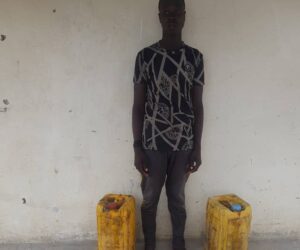Philippe Petit (born August 13, 1949) is a French highwire artist best known for his unauthorised highwire walks between the towers of Notre-Dame Cathedral in Paris in 1971, the Sydney Harbour Bridge in 1973, and the Twin Towers of the World Trade Centre in New York City on August 7, 1974. Petit has since relocated to New York, where he has served as an artist-in-residence at the Cathedral of St. John the Divine, where he also performs aerially.
He has performed wire walking as part of official events in New York, around the United States, France, and other countries, as well as conducting workshops in the art. In 2008, James Marsh’s documentary Man on Wire, chronicling Petit’s walk between the buildings, won multiple honours, including the 2009 Academy Award for Best Documentary Feature. Robert Zemeckis directed the film The Trek, which is based on Petit’s trek. Petit was also the topic of a children’s book and its animated adaptation, both of which were released in 2005.
Early Life


Petit was born in Nemours, Seine-et-Marne, France, and his father, Edmond Petit, was an author and army pilot. Petit became interested in magic and juggling when he was very young. He enjoyed climbing, and at 16, he made his first steps on a tightrope wire.
Career
Petit became known to New Yorkers in the early 1970s for his regular tightrope-walking and magic acts in the city’s parks, particularly Washington Square Park. Petit’s most renowned performance was in August 1974, on a wire between the rooftops of the Twin Towers of the World Trade Centre in Lower Manhattan, New York City, 400 metres (1,312 feet) above the ground.
He performed for 45 minutes, completing eight passes around the wire while walking, dancing, lying down on it, and saluting spectators from a kneeling position. Office workers, construction labourers, and police officers cheered him on.
Petit planned his “coup” when he was 18, after reading about the projected building of the Twin Towers and seeing drawings of the project in a magazine he read in 1968 while sitting in a dentist’s office. Petit planned what became known as the “artistic crime of the century” for six years. During this time, he learnt everything he could about the buildings’ construction. During the same time period, he began performing high-wire walking in other well-known locations.
Rigging his wire covertly, he performed a circus act and a public presentation. He made his first stroll between the towers of Notre-Dame de Paris in 1971, while priests were being ordained inside the church. In 1973, he walked a wire strung between the two north pylons of the Sydney Harbour Bridge.
Petit had to learn how to accommodate issues such as the swaying of the high towers due to wind, which was part of their design; the effects of wind and weather on the wire at that height; how to rig a 200-foot (61 m) steel cable across the 138-foot (42 m) gap between the towers (at a height of 1,368 feet (417 m)); and how to gain entry with his collaborators, first to scope out the conditions and then to stage the project. Petit and his collaborators had to transport heavy equipment to the rooftops. He visited New York several times to make firsthand views.
Petit and his collaborator, New York-based photographer Jim Moore, chartered a helicopter to capture the towers from above while they were still being built. Two other partners, Jean-François Heckel and Jean-Louis Blondeau, assisted him in practicing in a field in France, as well as accompanying him to participate in the project’s final rigging and photography. Francis Brunn, a German juggler, contributed financially to the project and its planning.
Petit and his crew got access to the towers many times and hid on the higher floors and roofs of the unfinished structures to investigate security systems. They also examined the structure and selected locations to anchor the wire and cavaletti. Petit built a scale model of the towers from his own observations, drawings, and Moore’s images to build the necessary rigging for the wire walk.
Petit used an American worker’s ID to create bogus identification cards for himself and his colleagues (saying they were builders putting an electric fence on the roof) to get access to the buildings. Before this, Petit had carefully observed construction workers’ clothing and tools. He also took notice of office workers’ attire so that some of his collaborators could pass as white-collar workers. He kept track of when the workers arrived and left, so he knew when he’d have access to the roof.
Petit and his crew had a lucky break on the night of Tuesday, August 6, 1974, when they were transported to the 104th level by goods lift with their equipment. They stored it 19 steps beneath the ceiling. Petit and his crew opted to use a bow and arrow tied to monofilament and a rope to pass the cable across the abyss. They had to practise several times to improve their skills.
They shot the fishing line first, then heavier ropes and ultimately the 450-pound (200-kilogram) steel cable. The team was delayed because the hefty cable sank too quickly and had to be physically dragged up for hours. Petit had already identified sites where two cavaletti (guy lines) might be anchored to other points to stabilise the cable and reduce wire swing.
Networth and Lifestyle
Philippe Petit’s net worth is estimated at $2 million. His fortune has come from a variety of sources, including speaking engagements, royalties from film adaptations of his life story, and performances. He has also made money from his several books, including To Reach the Clouds, which chronicles his astonishing World Trade Centre walk.





